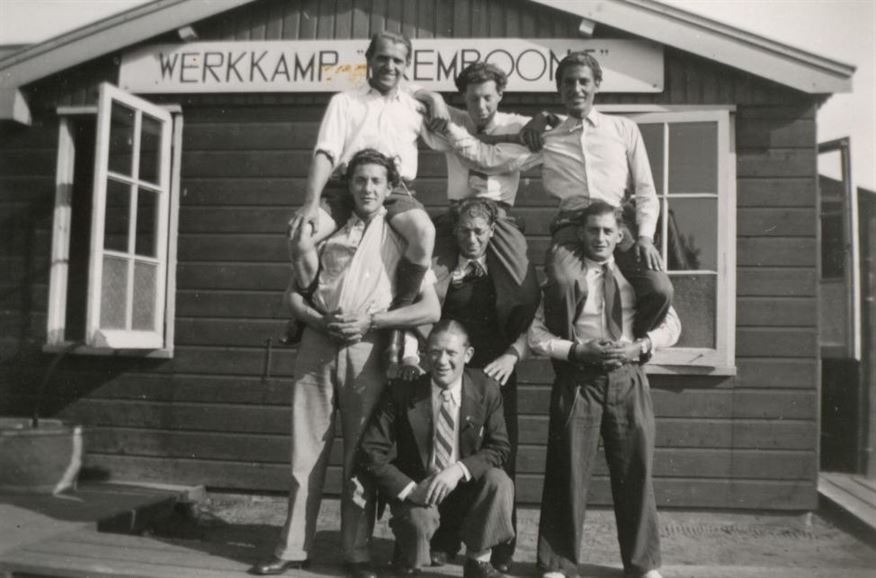City on the Heath
Although the prisoners’ perspectives were bleak, largely in 1943-1944, there were a lot of efforts to make Camp Westerbork look as if it wasn’t the last stop on the road of destruction. Nevertheless, everyday life was heavy. Most barracks had hardly any space. Nobody could withdraw once in a while. The hygiene left a lot to be desired. There was no lack of lice and fleas. The inhabitants lived in each other’s pockets.
Etty Hillesum: 'The immense, infuriating need of Westerbork actually starts in the colossal barracks that were built in a rush, in the packed warehouses of humans made with drafty lattice, where, under a low-hanging heaven of drying laundry of hundreds of people, the iron bunks were stacked three high.’
Life as in a normal village
The camp had to function as a normal village as much as possible. Whoever had a job could count themselves doubly lucky. Nothing was worse than walking aimlessly through the mud in the camp. Everyone could tell you that whoever didn’t have anything to do was the first to get onboard. There were courses and sports activities to take part in. You could even go shopping. The camp had its own money. You could use this in the Lagerwarenhaus and the Lagerkantine. There was an exchange office where the last ‘regular’ money could be exchanged for the Westerbork bills. In the registration barracks, there were regular revue performances and concerts, as well as plays.
For the children, the camp appeared even more normal than for the adults. Just like at home, they had to go to school. All things considered, Westerbork was ahead of its time. For children between the ages of 1 and 6, day care and kindergarten merged into each other. For older children, education was compulsory until they were 15 years old. In doing so, the youngest camp inhabitants led a life during the day that seemed as normal as possible. As teachers could be taken away every week, education was dependent on incoming and outgoing transports as well.
Hospital in Camp Westerbork
A special feature in Camp Westerbork was medical care. Prior to the war, many Jews worked as surgeons, doctors, or dentists. A job in medical care was so desired that the best staff possible could easily be found. At one point, the hospital contained 1,725 beds, 120 doctors and 1,000 people as staff. The patient didn’t have anything to complain about when it came to care, but there was still the threat of transports. ‘The look of one of those rooms at half past eight’ – on mornings of the transport – ‘is indescribable. Everyone could take only 15 kg, including one blanket,’ nurse Ellen Deitelzweig Senior writes in her diary.





